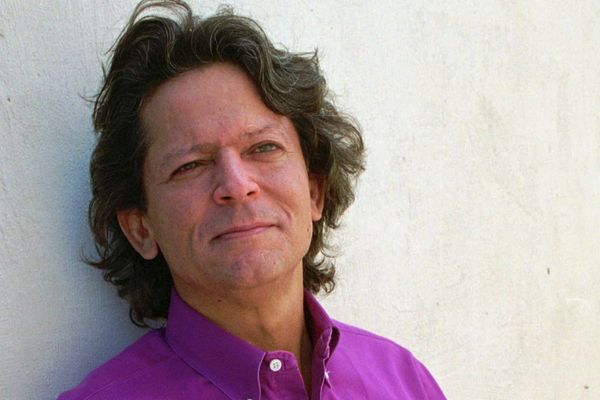
Mineral resources are the bedrock of Australia’s $180-billion-a-year exports to China. But China’s access to our lithium and other rare earth minerals — used for electric car batteries, storage, clean hydrogen and other clean energy technologies — are under threat.
The traditional trading and investment relationship between the two nations is facing new changes and challenges after China’s imposition of tariffs and bans (official and unofficial) on a range of Australian exports over half a decade, and as Australia draws ever closer to the United States.
The narrative around Australia’s traditionally divergent trade and strategic focuses — put simply, China for trade v the US for strategy — was somewhat upended last week. US President Joe Biden may not have made it to Australia, but significant deals were struck that effectively promoted US interests in the mining sector in an attempt to wean off the US/Western world’s dependence on China as a provider of key elements for renewable energy.
For the first time, the alliance with the US has turned its focus to Australian resources. Indeed, under the US deal, Australian companies may get access as “domestic suppliers” to the US$369 billion ($555 billion) Biden administration’s Inflation Reduction Act. There will be understandable frustration in China — its investment and imports have underpinned the sector for the past two decades, only to have, some could argue, its face rubbed in it.
The key details
At the recent G7 summit in Hiroshima, Australia and the US signed an agreement for bilateral cooperation under a climate, critical minerals and clean energy transformation compact aimed at “establishing climate and clean energy as a central pillar of the Australia-United States alliance”.
The goal is to attempt to lessen reliance on China as a provider of key resources and processed minerals for batteries and renewable energy products. It explicitly lays out plans to finance expanding emerging industries, assess the availability of critical minerals, and aim for cost reductions of “clean energy in our countries and globally” using government bodies such as the US Export-Import Bank and Export Finance Australia. This means Australian and US miners may get government backing for offshore investments in the way that Chinese companies have for many decades.
This latest deal with the US is something Trade Minister Don Farrell has to deal with as he continues to attempt to reopen doors to Australian exports in China.
Making more of our minerals
The idea that Australia can further use its minerals to establish itself as a clean energy power was flagged by Prime Minister Anthony Albanese at the National Press Club in February: “Australia very much has a direct interest in making more things here and improving our sovereign capability.
“Rare earths and critical minerals are part of the national reconstruction fund. It’s about taking those things here, providing financing for Australian-based businesses to invest and value-add here. Why aren’t we making more batteries here? We have almost half of the world’s lithium deposits.”
The line on lithium
The agreement on lithium is key. Australia mines 53% of the world’s total supply, and demand for lithium is soaring. World output was 737,000 tonnes of lithium carbonate equivalent in 2022 and is estimated to reach 964,000 tonnes in 2023 and 1.7 million tonnes in 2024. Australia has the second largest lithium reserves in the world: about 6 billion tonnes compared with Chile’s 9 million tonnes.
Australia will attempt to shake off its lithium dependence on China, which takes most of our exports. In the process, Australian miners will attempt to move up the value chain, addressing a long-term criticism of the Australian resources sector — that it remains primarily a quarry that misses out on the economic benefits of jobs and high margins that create the opportunity to build factories for further processing.
The big question is whether the sector is capable of breaking its century-long habit of passing up the opportunity to increase the value of our mineral exports by pursuing further processing onshore.
Australian mines primarily extract lithium as spodumene concentrate (which is about 6% lithium) and is the most widely exploited lithium mineral source globally. The spodumene concentrate is exported primarily to China, which then produces lithium hydroxide for batteries from the spodumene. That’s the main initial market that the new deal with the US has its eye on.
Spodumene can also be processed into lithium carbonate, which is sometimes used in batteries but more commonly for medications, glass production and other uses.
In June 2022, $16 billion of lithium was exported from Australia, up from $5 billion the previous year to China, accounting for 94% of Australia’s total lithium exports.
Australia and the US want to increase their battery-making power rather than relying on China. US battery-production capacity is expected to increase by 838 gigawatt hours between 2022 and 2027, but the global market will still be dominated by China whose capacity will see a 5304 gigawatt-hour jump.
A number of Australian lithium miners are commencing studies into onshore processing. As well as the economic benefits, they say it will reduce the impact of shipping as 94% of shipped spodumene — the non-lithium portion — is thrown out as waste.
Pollution and environmental destruction
Lithium is particularly problematic to mine and even more so to process.
In Australia, it is mined from open-cut mines and roasted a number of times, initially at 1100 degrees. Along with the usual scars on the landscape and the destabilisation of local ecosystems brought by mining, lithium mining uses large quantities of water and energy. Analysts have found that due to the small amount of lithium extracted from mined soil, 15 tonnes of carbon dioxide are released for every tonne of lithium produced from mineral extraction.
“In terms of processing, all of the remaining steps require significant additional chemical input,” International Battery Metals CEO John L Burba has said. “The formula is simple: more mining and processing steps equal more energy, more [greenhouse] gas, more chemicals and more chemical waste. This leads to more inevitable air, ground and surface water pollution.”
Outsourcing the mess of further processing to China has been convenient, but the question is whether we can compete on our own shores — and do it cleanly. The biggest issues are cost and scale, two advantages that China has held with its long-developed lithium battery sector. And by now, everyone should be wary of promises from the mining sector of newer, clever methods.
ASX-listed Pilbara Minerals is working with the Australian tech company Calix on a project to refine spodumene via a decalcification process they claim “greatly reduces the cost, waste and CO2 footprint of Australian lithium, creating a significantly higher value export product”.
The companies are expected to decide by the end of the year on whether to invest up to $70 million to build a demonstration plant.
The other arm of AUKUS is also getting in on the act. Tees Valley Lithium, a subsidiary of UK-listed Alkemy Capital, is investing in a lithium sulfate plant in South Australia.
Unsurprisingly, China is also keen on exploiting Australian lithium — as it has iron ore, coal and aluminium in the past. In March, the world’s largest battery maker, China’s CATL, sold its 5% share in Pilbara Minerals for $601 million, booking about $500 million in profit but retaining supply rights.
But Chinese-controlled Tianqi Lithium Energy Australia recently failed in its attempt with local partner IGO in a $95 million takeover of Essential Minerals. While the deal was stymied by shareholders in the end, it was coupled with commentary from Resources Minister Madeleine King about “like-minded” foreign investors. Tianqi has pitched the deal as “a perfect example of a mutually beneficial collaboration between Australia and China”.
In February, Treasurer Jim Chalmers blocked the Yuxiao Fund’s application to the Foreign Investment Review Board to increase its stake in rare earths miner Northern Minerals Limited from just under 10% to 19.9%.
The Albanese government is investing in the sector, but more needs to be done by mining companies to extract more value for Australians. And the government needs to create longer-term industries by providing some stick along with the carrot of taxpayer investment.
These days, turning to China as our No. 1 customer is clearly not an option with government policy clearly favouring the US and other allies.







